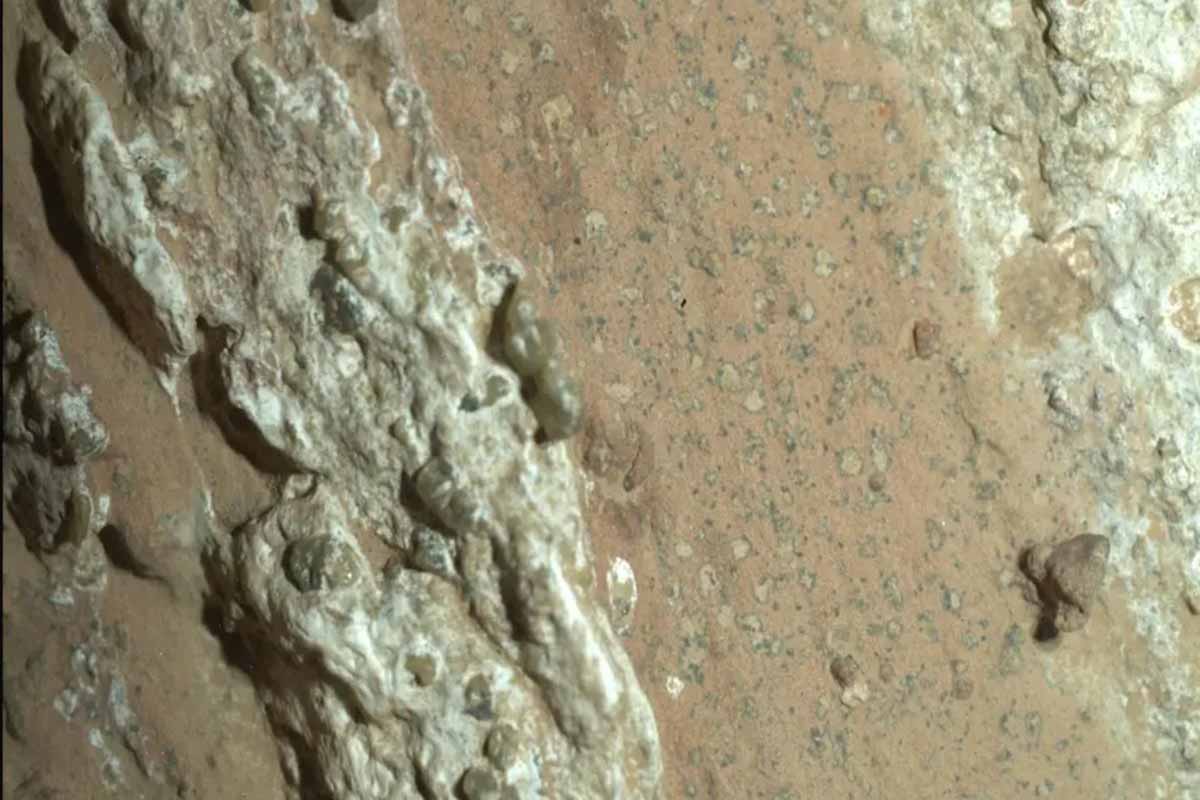The world holds its breath as NASA hints at a discovery that could redefine humanity’s place in the cosmos. A quiet statement from the agency suggests that something extraordinary has been found—something that blurs the line between science and wonder. While the details remain sealed, the tone is unmistakable: this is no ordinary update. Beneath Mars’s silent surface, a secret long suspected may finally be stirring, and for the first time, the question of life beyond Earth no longer feels distant, it feels near.
Mud, river, and a sealed clue in Jezero
Perseverance bored into Sapphire Canyon’s mudstone and pulled a core from “Chevaya Falls” in Neretva Vallis, a channel about a quarter mile across that once fed Jezero Crater’s lake. The team sealed the sample for potential Earth return, where deeper lab tools can push past rover limits. In July 2024, NASA set the stage for a long, methodical test.
The rock is fine grained, water laid, and not volcanic. Circular reaction fronts nicknamed “leopard spots” sit with tiny nodules inside layered sediments. These quiet patterns matter because slowly formed textures tend to preserve delicate signals. The site lies along Bright Angel outcrops that keep veins and layers aligned with gentle change after burial, not violent heat.
Low temperature reactions reorganized elements that were already in the mud. That detail matters because life tolerates cool chemistry, while high heat often resets rocks and blurs small features. The mudstone stays low in magnesium and manganese and shows no intense reheating, so its microtextures remain readable. The core is a time capsule, not a scrambled record.
How NASA’s rover read textures and elements
Perseverance used SHERLOC and PIXL to map organic carbon with phosphate, iron, and sulfur in repeating patterns. The pairing of Raman and elemental maps gave a consistent picture over multiple targets. Organic signals appear in several spots, which helps rule out one-off quirks and guides follow-up drilling and imaging on nearby units.
Two minerals stand out. Vivianite is an iron phosphate, and greigite is an iron sulfide linked to iron and sulfur cycling in oxygen-poor settings. They occur in watery sediments on Earth far more often than in lavas. Their presence in this mudstone fits the river-to-lake story already written in Jezero’s layered rocks.
Rims rich in vivianite encircle small cores enriched in greigite. That bullseye matches a sequence of electron transfers seen in some Earth sediments. Reaction fronts cut across grains rather than fractures, which indicates chemistry moved through pores at low temperature. Patterns repeat across spots, so the signal looks organized, not random.
Earth analogs that mirror Martian chemistry
On Earth, vivianite often forms when microbes reduce iron in water-rich muds and trap phosphorus in blue-green nodules. Lab and field studies document biologically mediated vivianite produced through extracellular electron transfer. Those studies give a template for comparing textures, and they flag tests that can separate metabolism from abiotic lookalikes.
Greigite commonly appears in places where sulfate-reducing bacteria drive sulfur chemistry without oxygen. In controlled experiments, greigite showed up only in live biotic setups after months of incubation. That rule of thumb is not proof by itself. It does, however, sharpen which measurements matter most when scientists weigh life against chemistry.
Those parallels do not let NASA claim biology. They do show the chemistry sits inside the zone where life is plausible. The vivianite-rimmed, greigite-centered pattern points to ordered redox steps. If microbes drove the steps, the rock records metabolism. If not, it still captures how Martian mud organizes iron, sulfur, and phosphorus without cells.
Why NASA treats this as a signal, not proof
A potential biosignature could have a biological source, yet it needs more checks to exclude nonbiological paths. The Confidence of Life Detection, or CoLD, scale sets that path. First detect a signal, then exclude contamination, then attack alternative explanations. Only after those steps can claims move up the ladder.
This work sits early on that ladder. It clears key rungs but leaves heavy tests for Earth labs. Organic carbon can come from meteorites or form without biology, and the authors say so. They outline isotope and microtexture analyses that can tell paths apart, and they map how to run those tests under clean, controlled conditions.
The mudstone includes calcium sulfate veins and stays fine grained with low magnesium and manganese. There is no sign of the high heat that would erase subtle patterns. Those details build context rather than headlines. They reduce noise, define limits, and keep the focus on signals that survive gentle burial and slow chemical change.
What comes next for samples and rover mapping
If vivianite and greigite formed through microbe-like steps, Bright Angel captures a fleeting window when surface waters powered energy strategies still used on Earth. That would extend habitability in time and place within Jezero. If abiotic paths made the pattern, the record still matters because it shows how Mars cycles elements without life.
The plan now turns to lab work. Isotopes can reveal metabolic bias, microtextures can pin growth sequences, and carbon structure can test organic origin. Sample return planning will shape pace and access. Clean labs can run measurements the rover cannot, while the rover keeps scouting for the best targets to cache.
PIXL and SHERLOC proved sensitive enough to guide that search. Their maps help spot reaction fronts, veins, and repeating textures across outcrops. As new targets are logged, the CoLD framework will keep messages clear and sober. Those steps help NASA turn a potential biosignature into a result people can trust without overselling uncertainty.
Why this careful milestone matters in the bigger Mars picture
Leaders emphasize caution. Nicky Fox says it is not life itself but a potential sign that deserves hard tests. Lead author Joel A. Hurowitz also keeps the language precise. Acting administrator Sean Duffy of NASA underscores gold-standard science and points to future crewed missions that will benefit from today’s discipline.
